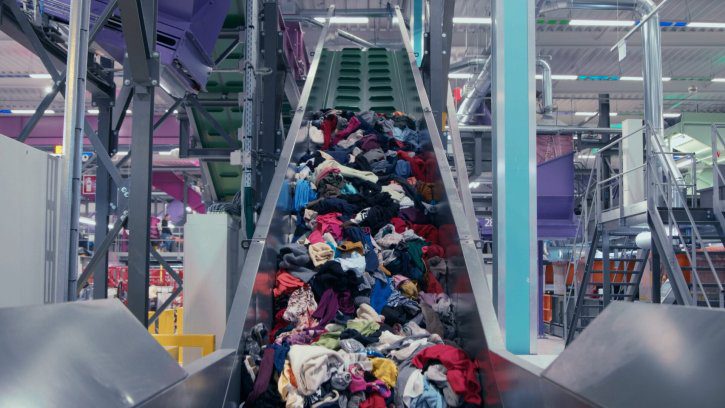TL;DR:
- Fashion for Good launches the 18-month Rewear Project to enhance textile recycling.
- AI and machine learning will optimize garment identification for reusability.
- Leading European textile sorters partner in the project, backed by major brands.
- Legislative changes in the EU underscore the urgency for comprehensive recycling solutions.
- The project aims to automate product data collection and improve sorting efficiency.
- Specific geographical regions, including Lithuania, the Netherlands, Poland, and Spain, will be focused on.
- Findings will inform investment decisions in circular business models and repair centers.
- The Rewear Project builds upon Fashion for Good’s Sorting for Circularity framework.
Main AI News:
In a bid to revolutionize the fashion industry’s approach to textile recycling, Amsterdam-based Fashion for Good is taking its Sorting for Circularity framework to new heights. Their latest endeavor, the 18-month Rewear Project, promises to harness the power of artificial intelligence (AI) and machine learning to enhance the identification of reusable garments. This cutting-edge project will collaborate with some of Europe’s largest industrial textile sorters, including Erdotex, ModaRe, Humana People to People Baltic, and Wtorpol.
The Rewear Project has garnered significant support from industry giants, including Adidas, Bestseller, Bonprix, C&A, Inditex, Levi Strauss, Otto Group, PVH, and Zalando, providing the catalytic funding needed to drive this initiative forward. The Circle Economy Foundation will lead the development and implementation of the methodology, with invaluable contributions from Consumption Research Norway, Oslo Metropolitan University, and Revaluate.
As global textile production and consumption have surged in the last 15 years, the number of times a garment is worn has plummeted by 40%, averaging only seven uses per item. The European Union has witnessed a tripling of used textile exports over the last two decades, from just over 550,000 tons in 2000 to almost 1.7 million tons in 2019. However, the destiny of these garments remains uncertain. While many receive the label of ‘fit for reuse’ and are sold in second-hand stores or exported to markets in Africa and Asia, a substantial portion still ends up in waste streams, landfills, or incineration due to the industry’s sheer volume and lack of understanding of demand and resale criteria.
With impending legislative changes in the EU, such as Extended Producer Responsibility (EPR) schemes and stricter restrictions on textile exports through the Waste Shipment Regulation, the need for comprehensive solutions becomes more pressing than ever. Katrin Ley, managing director of Fashion for Good, emphasizes the importance of addressing the root cause of shifting the waste burden elsewhere. She states, “This consortium will provide crucial insights for policy developments and investments.“
Marieke Koemans-Kokkelink, head of sustainability at Erdotex, adds, “With this project, we hope to clarify the myths and half-truths on post-consumer waste dumping, but also salvage a lot by understanding the processes and journeys these garments travel.”
Currently, near-infrared (NIR) technology can determine garment composition, but assessing re-wearability remains a largely manual process. The Rewear Project aims to automate the collection of product information, including color, style, garment type, and quality, enabling sorters and brands to make more informed decisions. This data-driven approach will optimize the flow of textiles to achieve their highest value potential, aligning with local, European, and export resale market requirements.
To ensure accuracy and representation in capturing data on textile flows within the EU and export markets, the project will concentrate on specific geographical regions of Europe, including Lithuania, the Netherlands, Poland, and Spain. The project’s findings will be documented in a comprehensive report, complete with a supporting business case and implementation roadmap, guiding investment decisions in infrastructure, circular business models, and repair centers.
The Rewear Project builds upon Fashion for Good’s Sorting for Circularity framework, which was initiated in 2021 and subsequently launched in Europe, India, and the United States. This ambitious initiative aims to harmonize the collection, sorting, and recycling industries, propelling textile-to-textile recycling technologies and the resale industry into a sustainable future.
Conclusion:
The Rewear Project’s collaboration with industry leaders and the integration of AI technology into textile recycling signify a significant step towards addressing the environmental challenges posed by the fashion industry. By enhancing reusability assessment and streamlining recycling processes, this initiative not only contributes to sustainability but also aligns with the evolving regulatory landscape. It demonstrates a commitment to reducing waste and increasing the value potential of textiles, positioning the market for a more sustainable and responsible future.

